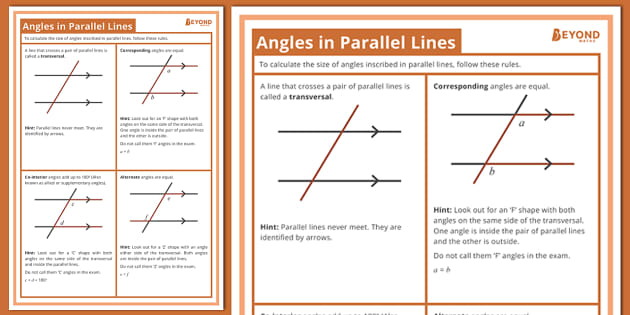

Co-interior angles add up to 180°. These angles are sometimes also called supplementary or allied angles. These two angles add up to 180°.
Co-interior angles can be found between two parallel lines, which are intersected by a transversal. On the same side of this transversal, the two angles will always add up to 180º.
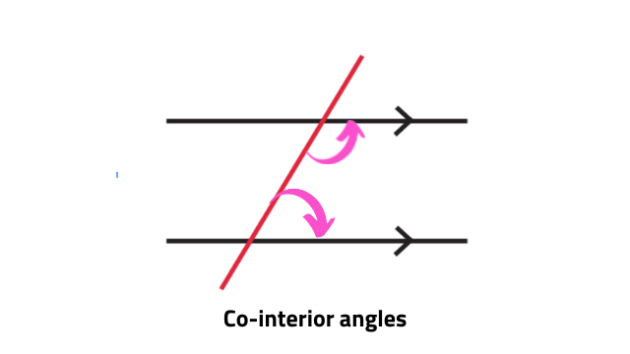
Find a range of Angle Teaching Materials in our Collection. All of our worksheets have been created by professional teachers, so you can sleep easy knowing we have the Aussie Curriculum in mind during the creation process.
Parallel lines are special because they never touch or intersect one another, even if they were carried on for infinity. They always remain the same distance apart.
The transversal is a line that intersects, or crosses, a pair of parallel lines. Check out these handy Maths Desk Prompts of Angles in Parallel Lines.
Year 7 Maths includes co-interior angles.
Three rules for co-interior angles:
Co-interior angles are found by drawing a C shape. They lie between two lines, and on the same side as the transversal. In our diagram, the two angles marked are the co-interior angles.

Co-interior angles do always add up to 180º. If both angles are 90º, then both of your co-interior angles are equal. It’s easy to work out one missing co-interior angle, simply subtract the other angle from 180.
Again, you can prove this yourself. Say the lower co-interior angle is 60°. That corresponds to the upper-right angle at the upper intersection. The upper-right angle at the upper intersection is on a straight line with the upper co-interior angle, so they must add to 180. 180 – 60 = 120. This means our co-interior angles add up to 180°.
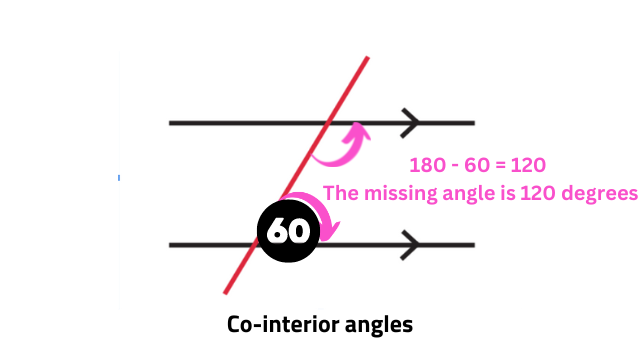
No. Where parallel lines are cut by a straight line, the co-interior angles are not always equal. Because they do always add up to 180º, you can find the missing angle by subtracting the angle that you have from 180º.
There are other pairs of angles found in different positions on parallel lines. These are known as alternate angles and corresponding angles:
Corresponding angles are found at different intersections, but on the same side of each parallel line, and the same side of the transversal line. To help you find them, you can draw an ‘F’ shape on the diagram (not necessarily the right way up). Corresponding angles are not equal, but do add up to 180º.
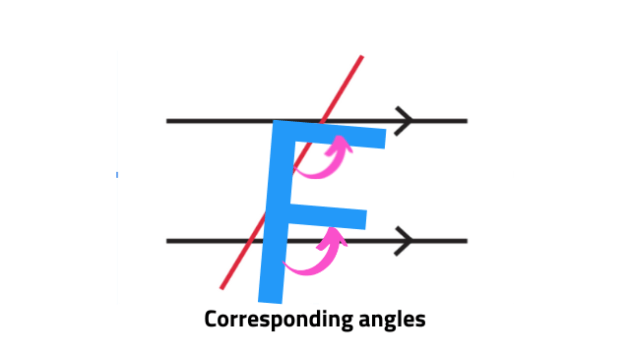
Alternate angles are found between a set of parallel lines, the alternate angles are the angles which form a 'Z' shape. Alternate angles are equal, and add up to 180º.
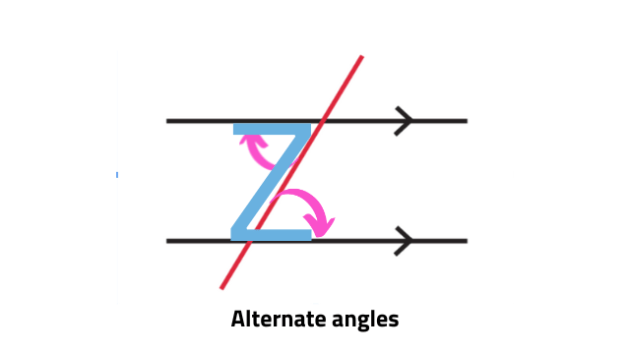
Any angles that add up to 180º are known as supplementary angles.
ACMMG163: ‘Identify corresponding, alternate and co-interior angles when two straight lines are crossed by a transversal. * defining and classifying angles such as acute, right, obtuse, straight, reflex and revolution, and pairs of angles such as complementary, supplementary, adjacent and vertically opposite * constructing parallel and perpendicular lines using their properties, a pair of compasses and a ruler, and dynamic geometry software’.
ACMMG164: ‘Investigate conditions for two lines to be parallel and solve simple numerical problems using reasoning.’
There are lots of ways you can teach your secondary students about co-interior angles, and angles in parallel lines. Download and print some of our teacher-made angle worksheets and activities, which have been created to save you time and effort:
Maths Desk Prompts Angles in Parallel Lines- This simple, but effective revision mat is great for helping students in their knowledge of angles in parallel lines. They can be flexibly used as a fixed desk prompt, during your appropriate study times, or handed out to students as an individual revision aid. The revision aid is designed to highlight key information and make it stick to students' memories as they strive to consolidate their learning.
Need to Know Angles A4 Display Poster- A handy display poster to put up on a wall in the classroom or home. Our handy poster not only covers co-interior angles, but also an array of angles. You can expect to find:
Year 7 Finding Missing Angles in Parallel Lines Worksheet- A wonderful angles revision task for your students. It covers all angles within parallel lines: corresponding, co-interior and alternate angles. Children can learn the rules for all three sets of angles.
What Is an Angle? Teaching Wiki
What Is a Degree? And Other Geometry Terms
What Is a Parallel? Teaching Wiki
What Is a Corresponding Angle? Teaching Wiki
In a nutshell, co-interior angles always add up to 180°. These angles are sometimes also called supplementary or allied angles. Co-interior angles can be found between two parallel lines, which are intersected by a transversal. You can download lots of fun co-interior angles worksheets from our Twinkl website. Not a Twinkl user yet? No problem! You can Sign Up for Your FREE Twinkl Account today!
 Home
Home  Membership
Membership  Customer Support
Customer Support  Create
Create  Blog
Blog 

